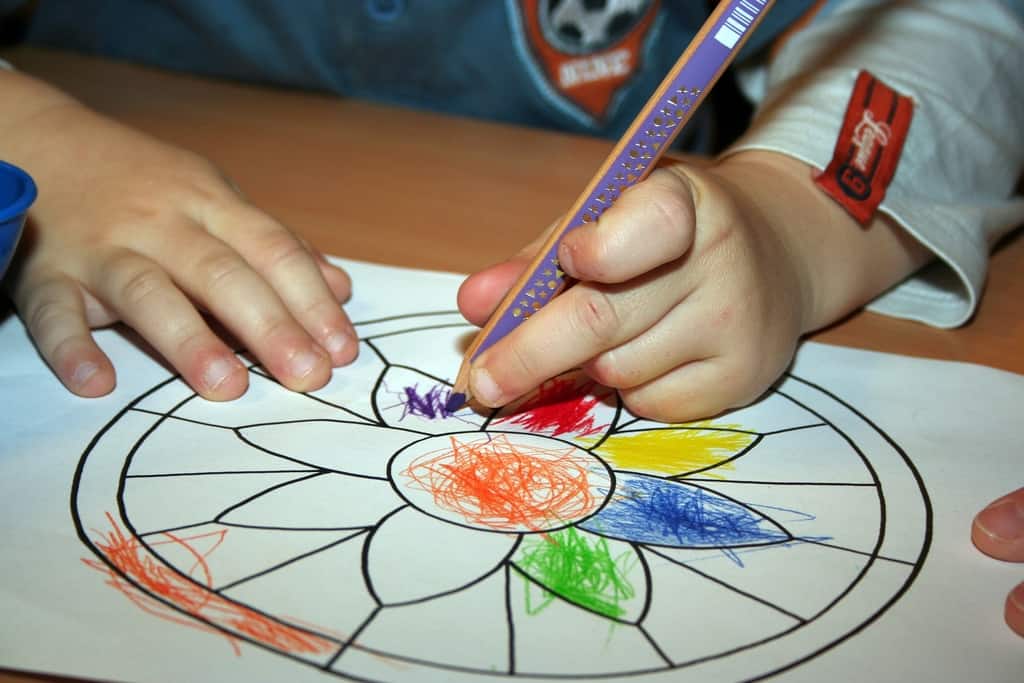Sunday, December 31, 2017
Friday, December 29, 2017
Sunday, December 24, 2017
Saturday, December 23, 2017
Did You Know?
It’s a myth that kids with learning and attention issues are “just being lazy.” While learning and attention issues may not be as visible as other health issues, they’re just as real.
Friday, December 22, 2017
Learning and attention issues are brain-based difficulties that can cause kids to struggle in school, socially and with everyday skills. Dyslexia and ADHD are examples of common learning and attention issues.
#LDAWorksforYou #Dyslexia #ADHD #1in5
Thursday, December 21, 2017
Sunday, December 10, 2017
LDASC Board Slate for 2018
At the November 2, 2017 LDASC Board Meeting, the 2018 executive officers for the board of directors of LDASC was determined in the board meeting.
Proposed Officers:
President - Dr. Analisa L. Smith
Vice President - Dr. Ricky Brannon
Treasurer - Debbie Gladden
Secretary - Anne Fogel
toxic arsenic levels in infant rice cereals
New study reveals toxic arsenic levels in infant rice cereals are 6 times higher than in
other baby cereals. Arsenic can cause cancer and can permanently harm a child’s ability to
learn. Here’s some TIPS to protect babies:
- Avoid rice cereal and choose oatmeal, mixed grain, quinoa, barley, buckwheat and wheat
- Cook rice with extra water and pour off before eating
- Serve whole or puréed fruits instead of juice (apple, pear and grape juices also have arsenic)
- Avoid rice milk
- Gluten free? Try to avoid rice flour which is common in gluten-free foods
other baby cereals. Arsenic can cause cancer and can permanently harm a child’s ability to
learn. Here’s some TIPS to protect babies:
- Avoid rice cereal and choose oatmeal, mixed grain, quinoa, barley, buckwheat and wheat
- Cook rice with extra water and pour off before eating
- Serve whole or puréed fruits instead of juice (apple, pear and grape juices also have arsenic)
- Avoid rice milk
- Gluten free? Try to avoid rice flour which is common in gluten-free foods
The Learning Disabilities Association of America is proud to be a partner in this report to educate parents on safer foods and to push the Food and Drug Administration to take immediate action to set a protective health limit on arsenic. #HealthyChildrenProject #LDAWorksForYou #GetArsenicOut
Saturday, December 9, 2017
Guest Blog: The Art and Science of Homeschooling
The Art and Science of Homeschooling: What You Need to Know
By: Alejandra Roca
Date: November, 2017
Reprinted with permission of blog author.

The modern home is much more than a place to come to at the end of the day. For instance, one in five Americans work from home, and even though the lines between home and office are blurred, studies show that employees who work from home are happier and more productive. Working from home isn’t just for adults — 3.4 percent of school-aged children are also getting an education from home. Shedding the confines of a traditional classroom education, these 1.7 million students are enrolled in homeschool.
With homeschooling, children learn outside of a traditional school setting under the guidance of their parents. The parents act as teachers and principals, determining curriculum, teaching styles (also called pedagogy) and methods of assessing knowledge. They don’t have complete free reign, however, and must follow both state and federal government regulations.
Why homeschool? Each parent has his or her own reason to take charge of their child’s education. Some common reasons include:
- Being able to line up teaching schedules to parents’ work schedules.
- Enabling long-term travel opportunities.
- Eliminating social and educational pressures to conform.
- Being able to control safety factors.
- Having the ability to engage in religious practices.
- Being able to accommodate special needs and learning disabilities.
- Allowing advanced children access to more stimulating material or creating an accelerated pace of learning.

Homeschooling is regulated some by the federal government, but mostly by individual states, all with different requirements. Parents interesting in homeschooling will need to check with their state’s department of education and their local school district to find out the expectations for educating their children themselves. You may be required to submit lesson plans, semester reports, administer standardized tests, and participate in home visits.
Getting Started Homeschooling
Whatever your reasons for homeschooling your child, you might feel intimidated at first. You don’t have an education degree and you haven’t been in school yourself for a long, long time. Don’t let insecurity get to you — who taught them how to walk, talk, ride a bike, be polite or care for a pet? That’s right — you’ve already been teaching your children long before you decided to homeschool.
Before you get started, it’s important to know your state’s requirements for homeschooling. Next, you’ll want to find a network of other homeschooling parents in your area or online. This group can be your lifeline when it comes to encountering challenging subjects, tips for creating routines and finding resources to help your kids stay engaged with social activities. Check out age-appropriate programs at your local museums for science, history and art. Reach out to music instructors and learn about community sports your child or teen can participate in.

Third, you’ll want to research different homeschool teaching methods and implement the one that works best for you and your child. There are many methods for homeschooling, but four common approaches include:
- Classic: This educational approach involves going back to the foundations of education — grammar (memorizing facts), logic (applying reasoning to the facts) and rhetoric (applying judgment to the facts and the logic).
- Waldorf: This homeschooling style encourages learning through art, movement and music early on; then, as they mature into teens, they are given opportunities to reason for themselves. This approach aims to teach the whole child at all ages — mind, body and spirit. Montessori methods are also similar in their holistic approach.
- Interest-Led: Also known as “unschooling” or “self-directed,” this pedagogy lets your child’s interests, goals and abilities drive the basis of their education. This can also help teens become stronger leaders, as well as learners.
- Unit Study: Rooted in a child’s interests, this educational style takes a specific interest, in horses, for example, and applies it to academic disciplines like biology, literature, anatomy and psychology.
Finally, you’ll want to set up your curriculum and learning milestones. You can base these off of state requirements — like if you have to turn in a portfolio at specific times of the year — or your schedule, child’s interests, seasons or other factors. Basically, you’ll want to plan out what you need your child to accomplish by when, and work backwards to create a learning plan that accomplishes these goals in stages.
Homeschooling for Disabilities
Some parents choose to homeschool because they are not pleased with the standards for special education in their district. All students, but especially those with special needs, can benefit from one-on-one instruction and attention.

If you’re homeschooling a child with special needs, first try to find a balance between your child’s abilities and the disability. Learn all you can about the disability and then how to modify your lesson plans, teaching styles and educational aids so that your child gets the best possible chance to use his or her abilities to learn. For example, if fine motor skills are a challenge, you and your child can work on learning through art. Holding crayons, paint brushes and pencils can help improve these skills, while also allowing your child to take breaks and work at his or her own pace.
Another upside to homeschooling a student with a disability is modifying the learning environment. Instead of being confined to a desk, a child with attention deficit disorder can walk around, learn in the afternoon instead of the morning, or take more frequent breaks. Homeschooling a child with special needs involves a lot of trial and error — don’t be afraid to get creative, get outside and get feedback, from your child and other homeschooling parents working with a similar situation.
Best Homeschool Learning Environments

Most people experienced with homeschooling agree that the last thing you want to do is recreate a sterile school setting in your home. What you want is a space, or even a few spaces, that will inspire your child, put them at ease with their education, and encourage them to learn. Remember, as a homeschooler, you have a huge advantage — your entire home, inside and out, is a place for learning.
You don’t need a formal learning environment to teach your kids. Biology can happen outside by keeping a garden or examining birds. Science and math can happen in the kitchen while learning to measure and understanding why certain ingredients react as they do on a chemical level. Reading comprehension can happen at the library, in a park or a museum.
However, you might find that having a dedicated room for projects, materials and testing could really be beneficial. Make it bright, open and inspirational. You can use small, colorful rugs to signify work areas. Paint the walls with chalkboard paint or add a whiteboard to make every space interactive. Most importantly, make it functional and liveable.
Benefits of Homeschooling

Research shows that many homeschooled children have significant advantages during their education, but you might be surprised to know those advantages continue on into life. Studies have shown that children who are homeschooled score higher on tests, average higher SAT scores and grow into adults who are much more engaged in their communities. In addition, homeschooling can boost your child’s education by:
- Customizing teaching to your child’s specific learning style.
- Accelerating learning or even slowing it down, depending on the child’s needs.
- Learning with a flexible schedule that involves field trips, external programs and family time.
- Developing independent critical thinking and problem solving skills.
- Nurturing their specific interests and talents.
- Instilling them with the values and reinforcing the beliefs central to your family.
Homeschooling not only benefits kids, but it can be incredibly valuable to parents as well. Not only will you be more invested in the learning process, but you all will be more invested in their family life.
Additional Homeschooling Resources:
Monday, November 20, 2017
Steps to a Healthy Home
Healthy Children Project is a project of LDA America.
LDASC is an affiliate of the Healthy Children Project Coalition.
Steps to a Healthy Home
TAKE STEPS TO MINIMIZE YOUR FAMILY’S RISKS OF TOXIC CHEMICAL EXPOSURES
Cleaning your home and family
- Buy or make non-toxic cleaning products.
- Dust and vacuum regularly; remove shoes when entering your home; minimize use of carpets.
- Do not use anti-bacterial soap; it contains a pesticide (triclosan) that may promote antibiotic-resistant bacteria and disrupt the endocrine system. Regular soap works fine.
- Look for non-toxic personal care products, such as shampoos, soaps, lotions and cosmetics. Avoid products containing lead, mercury and phthalates (often listed as "fragrance"). For more information, see The Campaign for Safe Cosmetics website.
Make non-toxic cleaning products
It’s easy and inexpensive to keep your family healthy and your house clean using products such as baking soda, club soda, lemon juice, baby oil, and water.
- Clean windows and mirrors: Use one-fourth cup vinegar mixed with one quart water, or use club soda. Wipe with newspaper.
- Clean drains: Use a half cup baking soda and half cup vinegar. Pour baking soda followed by vinegar down drain, flush with hot water.
- Remove spots from carpet: Use club soda and salt, or a 3-to-1 mixture of vinegar and water. Pour onto stains. Allow to bubble, and dab dry.
- Clean wood furniture or wooden, tile, and linoleum floors : Mix a few drops of vinegar and a capful of baby oil in a bucket of water.
- Plastics: Never use plastic containers or plastic wrap in the microwave. Minimize use of plastics with food and drink. Do NOT use polycarbonate (7), polyvinyl chloride (3) or polystyrene(6) with food or drink; they can leach toxic chemicals. Safer plastics are PETE (1), HDPE (2), LDPE (4) and polypropylene (5). Avoid polyvinyl chloride (PVC) (3) in toys, teethers, building materials, shower curtains, and other items. Avoid use of polycarbonate plastic (7), especially with food and drink. Use glass or non-polycarbonate plastic baby bottles, and stainless steel or non-polycarbonate sippy cups.
- Food: Buy organic and/or locally grown food when possible. Farmers markets can be a good source of inexpensive, local, and organic produce. Eat a diet low in animal fats, with lots of fruits and vegetables. Some toxic chemicals accumulate in fatty tissues of animals and then in people. Some fish contain high levels of mercury, PCBs and other toxic chemicals. Choose fish low in mercury and salmon that is wild or canned rather than farm-raised. For guidance see the Natural Resources Defense Council’s website on mercury contamination.
- Teflon and non-stick pans: Avoid using non-stick (Teflon and other trademarks) pots and pans. Dispose of non-stick pans when the coating is peeling, cracked, or flaking.
- Pesticides: Minimize, or avoid all together any use of pesticides in your home and garden or on your lawn. For help, advice, and alternatives, see the Beyond Pesticides website.
- Testing: Get children tested for lead levels at ages one and two. Test water supplies for lead. Test private wells for arsenic and other contaminants on a regular basis.
Saturday, October 7, 2017
Helping A Senior With Depression After The Loss Of A Spouse
Helping A Senior With Depression After The Loss Of A Spouse
by: Jackie Waters from Hyper Tidy
Losing a spouse at any stage of life is an
enormous, life-changing event. When it happens to a senior, however, it can be
particularly difficult to cope with. After spending so many
years together building a life and having children, seeing the person you love
go before you is devastating. For many seniors, depression is a very real
concern, and it can be amplified by other health concerns or substance abuse.
It’s important to keep in mind that it’s also a
very confusing time; many seniors are unsure of where to begin when it comes to
making arrangements,
informing family members, and getting their affairs into order. This
overwhelming process can lead to stress, anxiety, loss of sleep, and mood
swings, all of which contribute to depression.
If you have a loved one who has recently lost a
spouse and you suspect they may be suffering from depression, it’s never too
late to reach out to help. Read on to find out the best ways to get started.
Get
support
The loss of a spouse can take a huge toll on an
individual, both physically and emotionally, so
it’s important to find a means of support outside of friends and family who
won’t always be around. A counselor, therapist, or support group for grief are
all great ways to help your loved one get through this difficult time. Do some
research online and write down names, numbers, websites, and addresses so that
when your loved one is ready to take that step, he’ll have a list of resources.
Know
the signs of substance abuse
The loss of a partner can be so monumental that
it seems that pain will never go away. People who are coping with loss and
grief often turn to a substance that helps them numb those feelings, and it’s
all too easy to become dependent on those substances. Knowing the warning signs
of substance abuse will allow you to help your loved one before any damage is
done. These include:
●
Sleeping too much or too little
●
A lack of hygiene
●
Sudden mood swings
●
Withdrawing from friends and
family
●
Having a strong odor of alcohol
on their breath, or constantly using mouthwash/mints
●
Chills or sweating
●
Changes in behavior
●
Tremors in the hands
Depression and substance abuse are often
diagnosed together. For more information on how to get help for your loved one
who is exhibiting these symptoms, read on here.
Get
help
For many seniors, a spouse can play the role of
caregiver. As the years go on and we begin to exhibit more and more health
issues, having a loving partner there to help with medicine and doctor’s visits
and to be a comforting presence in case of an emergency is essential. Your
loved one must now face living alone and all that entails. One of the best ways
to help ease some of the stress that brings is to find help. Whether it’s in
the form of a friend or family member coming over a few times a week to assist
with laundry and the dishes or hiring a housekeeper to come and help out, your
loved one will benefit from having someone there. You might also consider
hiring a home health nurse if your loved one has physical ailments.
It can be difficult to watch your loved one go
through such a hard time, so think about yourself and your emotional needs, as
well, especially if these are family members or close friends. Don’t hesitate
to reach out for help if you feel you need to talk to someone. It’s not selfish
to keep your own needs in mind when someone you care about passes away.
Sunday, October 1, 2017
Special Children, Special Care
Special Children, Special Care
by: Jenny Wise of Special Home Educator
All children will experience accidents, injuries,
and illnesses. Most of these are temporary and won’t interfere with the child’s
quality-of-life, mental development, or their ability to care for themselves in
adulthood. However, some conditions, such as epilepsy, spina bifida, and
cerebral palsy, require around-the-clock care and lifelong accommodations.
Here, we'll
answer a few of the most common questions related to the everyday (and future)
care of special needs children.
What is a
chronic illness/permanent disability and how common are they?
The University of Michigan estimates that up to 18% of children born in the United
States have a chronic health condition. A chronic condition is any illness or
physical impairment that is expected to last the duration of the child’s life.
Asthma and diabetes are two of the most common chronic illnesses in children
and are typically manageable, allowing the child to lead a relatively normal
life with few modifications. Other conditions, including cystic fibrosis and
muscular dystrophy, persist with permanent life-altering symptoms.
How is
caring for a special-needs child different than that of other children?
Children with some disabilities, such as Down syndrome, require care very similar to
normally developing children. Mild to moderate disabilities may necessitate
additional medical care, screenings, and monitoring for issues of the thyroid,
heart, and cognitive development. Children with more pronounced disabilities
will need assistance with basic functions related to hygiene, medication, and
with any durable medical appliances such as a ventilator, catheter, or tracheotomy tube. Whereas non-special-needs
children are typically self-sufficient by their teen years, those with
exceptional health conditions may require indefinite care and companionship.
Who should
act as caregiver for a special needs child/adult?
At the age of 18, children, regardless of
disabilities, are seen as adults and thus, by law, are responsible for their
own personal and financial well-being. Parents of children with significant
disabilities may wish to apply for legal guardianship status, which allows them
to continue to make important financial and medical decisions on behalf of
their offspring. An adult under the guardianship of another is called a ward.
Often, personal, medical, and financial decisions for the ward are made by the
same person. Physically incapacitated adults may be capable of making decisions
about their care but may not be able to handle financial tasks. In this case, a
conservator may be necessary. A conservator is a person or entity responsible
for making financial decisions for the disabled individual but has no authority
over medical care. As parents age, it may become necessary to appoint a
successor guardian and/or conservator. A guardian/caregiver should be someone
with whom the child has held a relationship with and can be trusted to consider
the child’s best interest for the duration of his or her life. The American Bar
Association explains that conservatorship and guardianship carry
different responsibilities depending on state of appointment.
Are there
financial assistance programs available to help offset the cost of long-term
care?
Medical care is exponentially expensive with a price tag that
can reach into the millions of dollars over the course of a lifetime. There are
a number of federal programs for persons with disabilities to help cover living
expenses and medical costs. The US Department of Health and Human Services
notes there are more than a dozen special services that provide for the
educational and welfare needs of children and adults with disabilities that
prevent them from maintaining gainful employment; this list is a good place to start, but,
depending upon the state of residence, other assistance may be available.
Caring for a child with disabilities is an
emotionally and physically exhausting experience but one that is not without
its rewards. These children are remarkable fighters and instill a sense of awe
and wonderment in their friends and family. Parents of kids with special needs are truly
some of the world’s greatest superheroes with the ability to reach into the
future to ensure the health and safety of their alternately-able children.
Friday, September 29, 2017
If you believe children deserve clean air and drinking water, and healthy places to live, play and learn, now is the time to stand up and take action (http://bit.ly/ProtectEPAbudget)!
A well-funded EPA means healthy children and families, able to learn and thrive safe from toxic chemicals and pollution. Your Senators need to hear from you now! In a few months it will be too late - EPA's budget could be in shreds and children's health at risk.
The president has proposed a 31 percent cut to the budget of the Environmental Protection Agency. If these cuts are approved, no one stands to lose more than our children.
Without your voice, we could lose:
- Protections for our most vulnerable citizens – our children;
- Programs that remove lead from homes and schools
- Funding for state and local monitoring of air quality and warning systems
- EPA safety evaluations and restrictions on neurotoxic chemicals
- State grants for clean drinking water.
Together we can protect our children's precious growing minds and bodies by ensuring EPA has the resources to keep our air, drinking water, food and products clean and safe.
Let's raise our strong LDA voices [ http://bit.ly/ProtectEPAbudget ] on behalf of children's health. Together we can take action [http://bit.ly/ProtectEPAbudget and keep EPA working for all of us!
Thank you for everything you do on behalf of young minds!
Subscribe to:
Comments (Atom)












